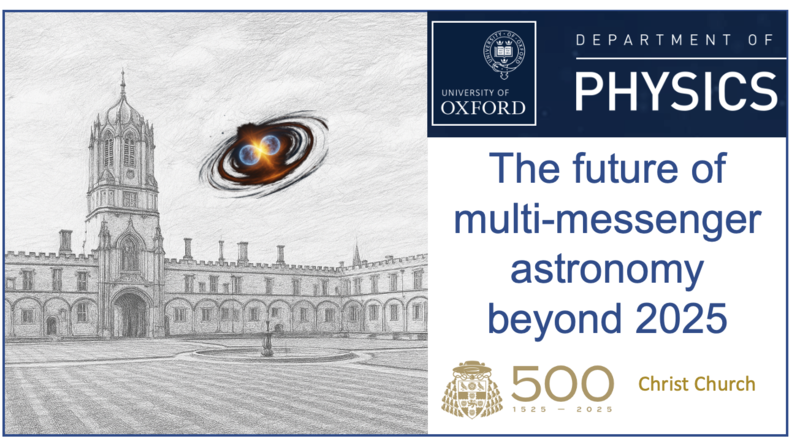Home

Workshop Rationale:
The LIGO-Virgo-KAGRA (LVK) Observing Run 4 is due to end on 18 November 2025. With a little over two months of operations left, the prospects of multiple events with joint electromagnetic and gravitational wave detections appears remote. August 2025 marks eight years since the binary neutron star merger GW170817, and its associated gamma-ray burst and kilonova. Since then, there has only been one other detection of a high-significance binary neutron star (BNS) merger, GW190425, in gravitational waves. However, in a surprising development, there have been two detections of kilonova signatures in long gamma-ray bursts in 2021 and 2023, at relatively nearby distances of around 300-350Mpc.
The European community invested significant effort and resources to form ENGRAVE, securing a large allocation of VLT time for a single, dedicated programme by ESO member-state scientists. The sources we expected to trigger on, BNS and neutron star - black hole (NSBH) mergers within 100-200Mpc with electromagnetic counterparts, have not been found. With the end of O4 approaching, it would be timely to review the field and strategise for Observing Run 5 (O5). While the lack of nearby BNS mergers is disappointing, the discovery of kilonovae emerging from long GRBs at low redshifts is remarkable. Gravitational-wave detection sensitivity will increase in O5. The Rubin Observatory's confirmed target of opportunity follow-up program, wide-field UV and X-ray missions (e.g., Einstein Probe, SVOM, ULTRASAT), new wide-field galaxy redshift surveys, and ongoing all-sky optical surveys, all offer scientific promise for multiple discoveries that we hope will change the field.
The Wetton Workshop 2025 will provide a forum for discussion of recent results on kilonovae and gamma-rays bursts, and to discuss plans for O5 and the associated new missions and ground-based facilities that will impact the field. We will ask ourselves questions around the future of the field, and what we can do to shape it.
Discussion items:
- Observing Run 5 and post-O5 plans
- What can we learn from the BBH and NSBH events to date?
- Optimal observations for the next kilonova - JWST, HST and ESO
- Progress on understanding kilonovae since GW170817 - observables, theory, GW signals
- Chemical enrichment of the r-process, and rates of BNS mergers
- Enhancing search and discovery by combining optical surveys: search strategies and joint analyses
- 3G detectors and space missions in the 2035+ timeframe
Date:
2nd - 3rd September 2025

Location and Local Information:
Sir Michael Dummett Lecture Theatre Complex, Christ Church, Oxford.
Lunches, tea and coffee will be provided each day. A social dinner will be held on September 2nd. There is no registration fee.
Local information, including accommodation details are linked here.
On the evening of 2nd September, the 5th Wetton lecture "Black holes, neutron stars, and gravitational waves: from a whisper to a symphony" will be delivered by Professor Patrick Brady of the University of Wisconsin, Milwaukee. This will be a public talk and all are welcome to the Department of Physics to hear the latest developments in the field after 10 years of discoveries.
Contact:
For scientific matters, please contact Prof. Stephen Smartt, chair of the organising committee (stephen.smartt@physics.ox.ac.uk).
For administrative matters, please contact Cigdem Arnison (cigdem.arnison@physics.ox.ac.uk).


